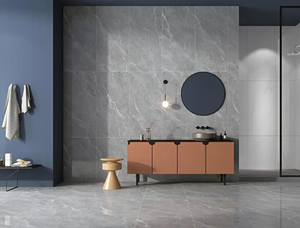
Tile inspection and testing methods, inspection and certification services for factories
As the core material for architectural decoration, the quality of tiles directly affects the decoration effect and service life. To ensure that the tile products meet industry standards and quality certification requirements, establishing a professional inspection process is of vital importance. This article will systematically introduce the inspection standards, testing methods and certification requirements for tiles, providing a complete quality control guideline for enterprises.
I. Physical Performance Inspection and Certification
1. Density and Hardness Certification
Impact Test Certification: By gently tapping the brick with a hard object, a clear and crisp sound indicates a high degree of porcelainization and high density.
Professional standard: A "thumping" metallic sound indicates high quality, while a dull "popping" sound indicates inferior quality.
Authentication tool: Conduct standardized tests using standard striking tools.
2. Absorption Rate Performance Certification
Test Method Certification: Drop water on the back of the tile and observe the speed at which the water stain spreads.
Grade standard certification:
Low water absorption rate: Suitable for use in wet areas (bathrooms, kitchens)
High water absorption rate: Only applicable to dry areas
Importance of Certification: Directly Affects Water Resistance and Service Life
II. Surface Quality Inspection Certification
1. Glaze Quality Certification
Mold-breaking Test: Scrub the glaze surface with a hard object. If no marks are left, it is of high quality.
Glossiness Certification:
High-gloss finish: Crystal clear and lustrous
Matte glaze surface: Soft and uniform
Pinhole inspection: Observe the surface closely to ensure there are no accumulated pinhole defects.
2. Color and Pattern Certification
Color consistency: No color variation within the same batch.
Pattern integrity: No color omission, misalignment, or broken lines.
Texture clarity: The pattern is fine and lifelike.
III. Dimension Accuracy Inspection and Certification
1. Flatness Certification
Visual inspection: Place the brick on a flat surface, ensuring that all four sides are perfectly aligned.
Right angle measurement: All four angles are 90-degree right angles.
Professional tool: Use a caliper to measure the accuracy of the diagonal lines.
2. Specification Consistency Certification
Dimensional Deviation:
Small brick: ±1mm
Large brick: ±2mm
Uniformity of thickness: The overall thickness is consistent and there is no deviation.
IV. Professional Level Inspection and Certification
1. Product Grade Certification
Premium Grade: The highest quality standard
First-class product: Minor defects are allowed.
Qualified product: Basic quality requirements
Outstanding product: Does not meet the standard requirements
2. Friction Performance Certification
Friction coefficient test: Used for verifying the safety performance of floor tiles
Wear grade classification: Select the corresponding grade based on the application environment.
V. On-site Inspection and Certification Methods
1. Visual Inspection Certification
Close-up inspection: Observe surface defects at a distance of 1 meter
Long-distance inspection: 3-meter distance assessment of color uniformity
Overall assessment: No missing glaze, cracks, spots, or scratches.
2. Sound Inspection Certification
Knocking method: Use fingers to grip the corner of the brick and gently tap the middle part.
Sound quality analysis:
Clear echo: Dense structure
Dull voice: There are internal defects.
3. Damage Inspection Certification
Section Analysis: Observe the fineness of the fracture area
Color consistency: The color inside is uniform with the surface color.
Material assessment: Moderately hard and brittle indicates a high-quality product.
VI. Wear Resistance Performance Grade Certification
1. Wear Resistance Classification Standard
Grade I: For display and wall use
Level II: Low-wear environments such as bathrooms and bedrooms
Level III: Areas prone to wear and tear such as the living room and kitchen.
Level IV: Areas with high foot traffic such as lobbies and corridors
Level 5: Extreme environments such as airports and train stations
2. Site Certification
Select the appropriate wear resistance level based on the usage environment.
Establish a place applicability certification system
VII. Packaging Label Inspection and Certification
1. Product Information Certification
The factory name, address, and trademark are all complete.
The quality grade is clearly indicated.
The water absorption rate indicator is clear.
2. Application Guidance Certification
Ceramic tiles: Low water absorption rate, suitable for flooring.
Porcelain tiles: Medium water absorption rate, versatile application.
Clay tiles: High water absorption rate, suitable only for walls.
VIII. Inspection and Certification Process Standards
1. Sampling Inspection Plan
Implement statistical sampling in accordance with the GB/T standards
Key performance items undergo full inspection and certification.
Establish a quality traceability management system
2. Inspection environment requirements
Standardize the inspection site
Professional inspection of lighting configuration
Standardized inspection process
3. Defect Level Determination
Serious Defect: Functional issues that affect usage
Main defect: Obvious quality issue with the appearance.
Minor defect: Minor manufacturing flaw
IX. Key Control Matters for Factory Inspection Certification
To ensure that the quality of ceramic tiles continuously meets the certification requirements, during the factory inspection process, the following matters need to be given priority attention:
Raw material control certification: Establish an evaluation system for raw material suppliers
Production process control: Establishing specifications for key procedures such as pressing, glazing application, and firing.
Calibration of testing equipment: Regularly calibrate measuring instruments
Quality system certification: Obtained ISO9001 quality management system certification
Personnel qualification certification: Inspection personnel undergo professional training and obtain certificates before taking up their positions.
Inspection and Certification Summary
The inspection and testing of ceramic tiles is a highly technical and systematic process that requires comprehensive verification and certification of physical properties, surface quality, and dimensional accuracy. By establishing a professional inspection process and strict quality standards, enterprises can ensure that their ceramic tiles meet industry certification requirements, providing high-quality and reliable material guarantees for architectural decoration.
Share this product

Tile inspection and testing methods, inspection and certification serv
As the core material for architectural decoration, the quality of tiles directly affects the decoration effect and service life of the building.
